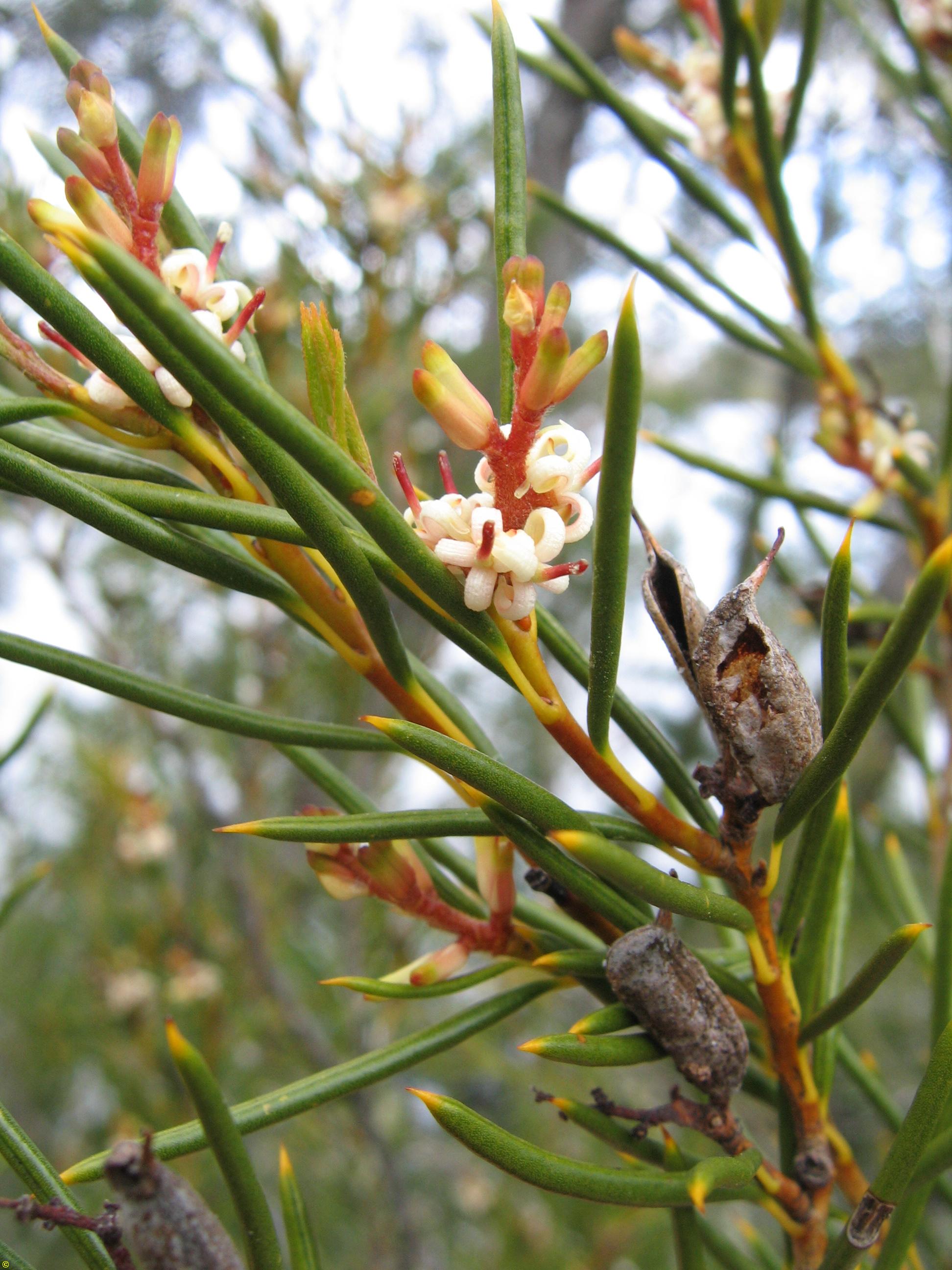Scientific Name: Orites acicularis Endemic Having a natural distribution confined to a particular geographic region
Common Name: yellow orites
Family Classification (Clade): Eudicots
Family: Proteaceae
Form Description: Yellow-green small shrub with many erect/ascending branches sometimes spreading.
Height (m): 0.5 – 1.5
Flowers: Creamy-white, sometimes with pinkish tips, in pairs in spikes, sweetly scented. Style reddish.
Fruit: Woody seed follicle – oblong and flattened with a short straight beak, thin but hard, light brown and hairless. Seed surrounded by a wing which is wider at each end.
Municipality
Plant Communities
Habitat Notes
Abundant and widespread on mountain plateaux, in all except aquatic or short alpine vegetation.
Site Tolerance
Exposed, Moist, Rocky, Windy
Soil Tolerance
Clay, Loam, Nutrient-poor, Poorly-drained, Well-drained
Frost Tolerance
Hardy
General Notes
Valuable as a traffic control plant because of its highly prickly nature. Good background planting. May need supplementary watering during extended dry periods. Sunny or semi-shaded aspect is suitable. Hardy to most frosts and snowfalls.
Propagation Calendar
-
Flowering Month
Jan Feb Mar Apr May Jun Jul Aug Sep Oct Nov Dec -
Seed Collecting Month
Jan Feb Mar Apr May Jun Jul Aug Sep Oct Nov Dec -
Sowing Month
Jan Feb Mar Apr May Jun Jul Aug Sep Oct Nov Dec -
Cutting Month
Jan Feb Mar Apr May Jun Jul Aug Sep Oct Nov Dec
Propagation Method
Seed Information
Seed Collection
Can be collected once follicle starts to turn from green to brown.
Seed Treatment Method
Standard Scatter seed thinly on to damp potting mix. Hold seed in place by covering with more potting mix to approximately the depth of the seed size.
Seed Treatment Notes
Fresh seed germinates readily without treatment.
Cutting & Division Information
Can be grown from cuttings of firm young growth.
